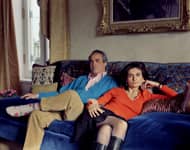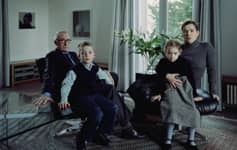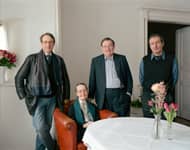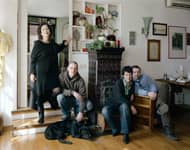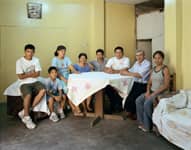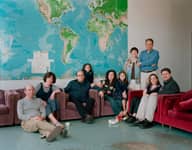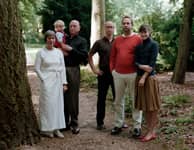Since his first family portraits in the mid-1980s, Struth has continued to extend the series, rendering this body of work the most consistent in terms of subject and approach. “The more family photographs I make, the more intriguing the project gets. I like the slow speed of the series and am interested in how my own development is somehow reflected in the atmosphere of the photographs.”
The incidence of family portraits mirrors, to a considerable extent, the pattern of Struth’s friendships, working associations and travel commitments. Families from Japan, China and Peru have augmented the main body of work drawn from friends and acquaintances in Europe and North America. The photographs of families in non-Western cultures—the Ma family in Shanghai, or the Ayvar family in Peru—open up the possibility of a study of different configurations of family life in different cultures. The photograph of the Ma family in Shanghai in 1996, for example, resulted from Struth’s sustained interest in Tai Qi, specifically the Wu style created by Ma Jiang Bao’s maternal ancestors.
As in earlier family photographs, the interiors often integrate other pictures on the walls behind the sitting family— for example, the religious reproduction hanging on the wall above The Ayvar Family, Peru (2005); the paintings of a skull and a head of a young woman in The Richter Family 1, Cologne (2002); the Caillebotte painting in Untitled, New York (2001); or the large colour map of the world in The Felsenfeld/Gold Families, Philadelphia (2007).
Familienleben/Family Life, a book bringing together 40 family photographs, was published in 2008 to accompany an exhibition at the SK Stiftung Kultur in Cologne. A second version of the exhibition was presented at the De Pont Stichting in Tilburg in the Netherlands, also in 2008.

